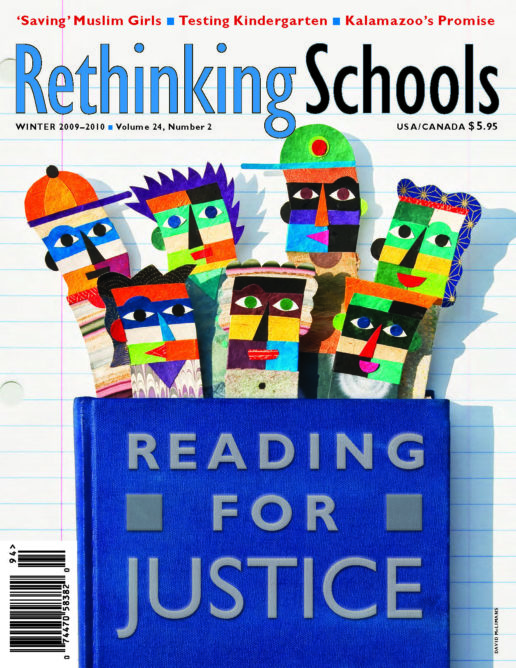Preview of Article:
“I Thought This U.S. Place Was Supposed To Be About Freedom”
Young Latinas engage in mathematics and social change to save their school
Illustrator: Michael Duffy
I sat and talked with a group of 5th-grade Latina girls, their voices filled with urgency and excitement. We were gathered for our twice weekly meeting of the after-school girls’ mathematics club at Agave Elementary School* in the U.S. Southwest. I was the facilitator of the group, conducting participatory research as a part of my graduate studies. The seven Latinas represented a range of mathematical abilities and confidence, as well as language skills (some bilingual in Spanish and English, some English dominant). On this particular January day, our usual opening activity of sharing stories from our lives turned to the subject of the school’s potential closure, which had been proposed by the school district the week before.
At a community meeting attended by several of us the evening before, the district officials laid out their argument for closing four schools, claiming that they used an objective, neutral, mathematical procedure for determining which schools to close. The girls’ discussion covered a variety of concerns about the potential impact of the closing on their community. “It’s not fair, though!” Zara insisted, drawing attention to what the school district left out of its arguments: the social impact of the school closings. This led to a heated discussion that included sharing personal stories and knowledge about the community, voicing concern for others, expressing disagreement with the district’s arguments, and suggesting ideas for how to save the school.
After a semester of building community within the group and investigating topics such as prison vs. education spending in our state, we had planned to explore school safety. However, given the news of the school closures, we shifted the club’s focus because, as Margarita reasoned, “What point is there to do school safety if there’s gonna be no school?”
Between January and the final school board vote in April, the Agave community mobilized to defend their neighborhood school—a school that had been attended by generations of primarily Latino families. Zara’s assertion that the closure was “not fair” seemed an ideal place to begin to push our conversation to how we might specifically use mathematics as a tool for participating in this mobilization. Our math-based participation in the community movement proved to be a powerful experience for both the girls and for me as an educator.

